Carving a simple human figure can be both a rewarding and educational experience for a beginning whittler. By focusing on clear shapes and proportions, you can use the following eight reference images as guides to understand how arms, legs, and the torso flow together. Start with a block of soft wood such as basswood or pine, since these woods allow you to make gentle cuts without too much effort. As you look at each image, imagine how the lines of the body can be translated into simple planes and curves. This way, you remain focused on capturing the essence of a human form without becoming overwhelmed by fine details.
Whittled Garden Gnomes: A Cheerful Lineup of Hand-Carved Charm
This image features four hand-carved wooden gnomes standing side by side on an outdoor surface. Each gnome sports a signature tall red hat, a white beard, and distinct color combinations of blue and yellow clothing. Their subtle variations in facial expressions and hat shapes give them a playful individuality, capturing the rustic charm of traditional woodcarving. Set against a blurred backdrop of greenery and cloudy skies, the figures stand out with their warm, natural tones and whimsical design—perfect as inspiration for beginner whittlers or lovers of handcrafted folk art.
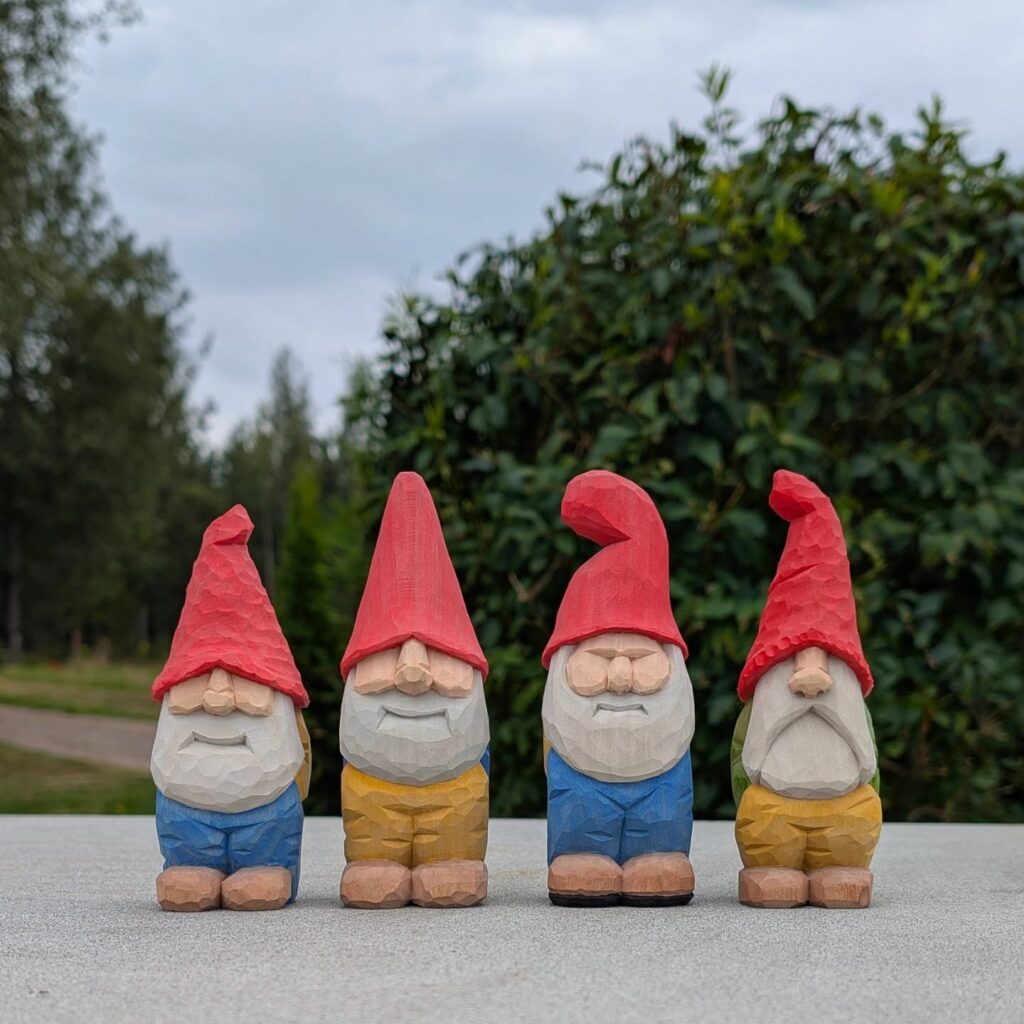
The Bearded Woodsman: A Rustic Whittling Masterpiece
This hand-carved wooden figure depicts a rugged woodsman with a blue beanie, a thick gray beard, and a thoughtful expression. Dressed in a bright red shirt with black suspenders, yellow pants, and sturdy boots, the carving captures the spirit of outdoor life and traditional craftsmanship. The faceted texture of the wood, left intentionally rough, enhances its folk-art appeal, while the colorful paint brings warmth and personality. Held in the palm of a hand, the piece showcases both the scale and intricate skill involved in this charming whittling project.

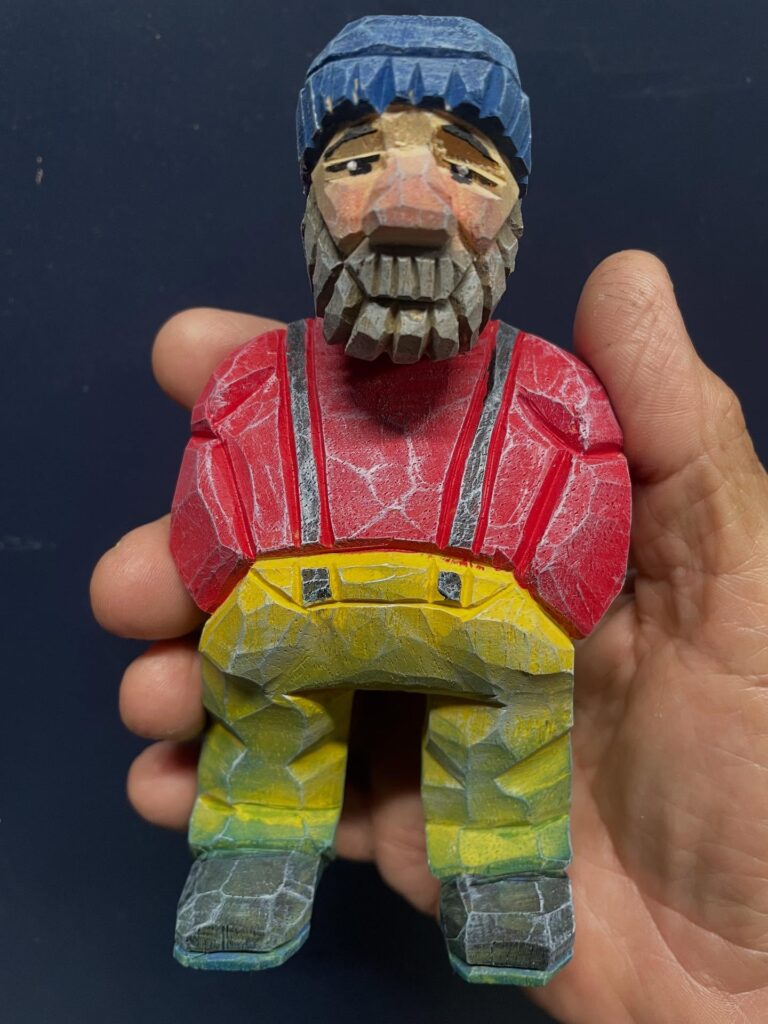
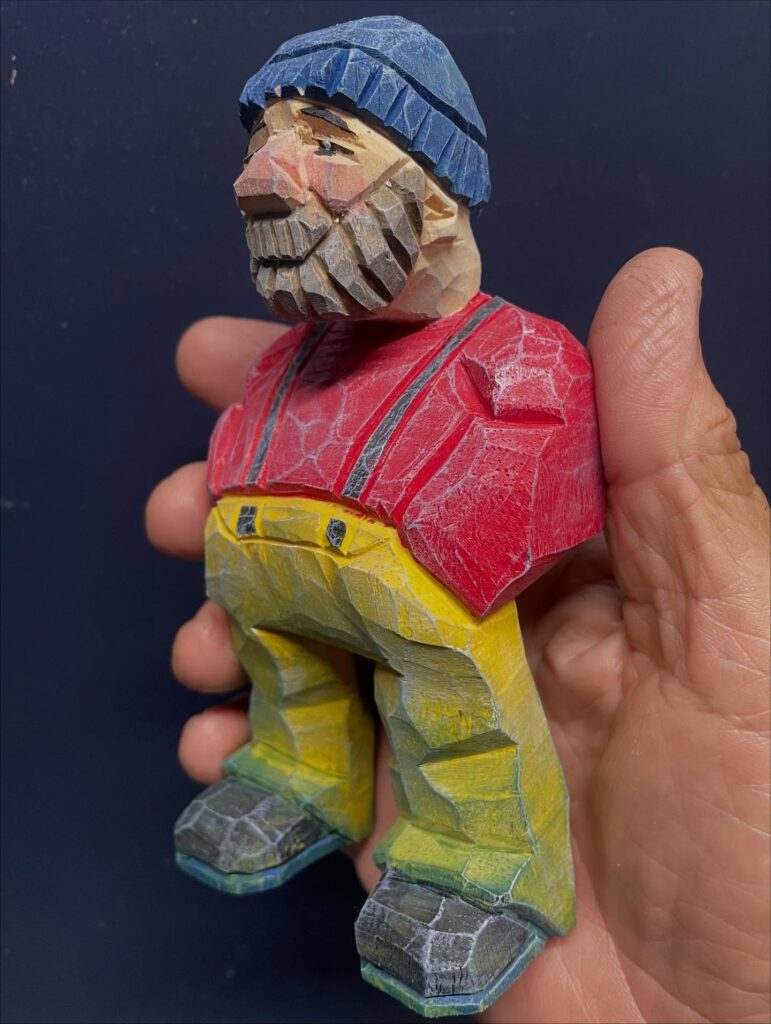
Wood Spirit Relief Carving: The Guardian of the Forest
This image features a detailed wood relief carving of a mythical forest spirit, often known as a “wood spirit” or “tree spirit.” The carving showcases a long-bearded face emerging from the grain of the wood, framed by gently etched leaves that blend seamlessly into the natural surface. The artist’s skillful use of depth and texture gives the piece a lifelike presence, as if the spirit is peering out from within the wood itself. Held in hand, the piece radiates warmth and craftsmanship, making it a beautiful example of traditional whittling and nature-inspired art.

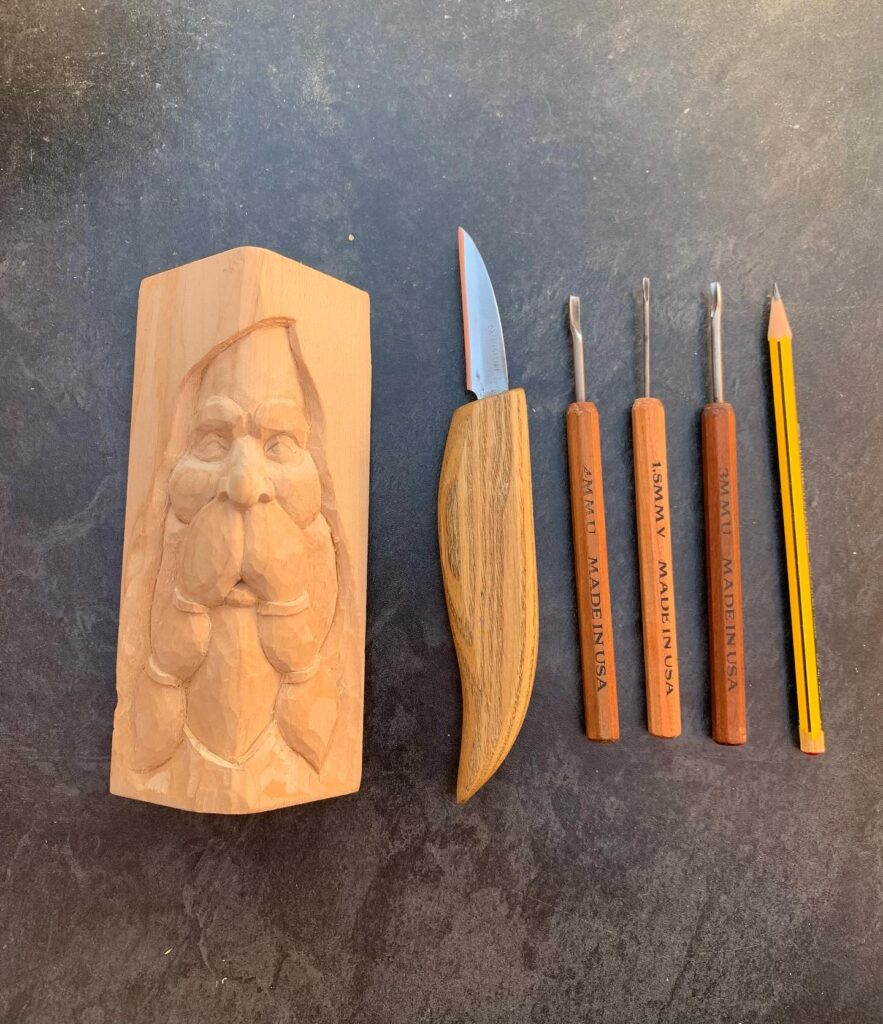
The Thoughtful Whittled Fisherman
This hand-carved wooden figure portrays a bearded man in a green sweater, brown pants, and a teal beanie, gazing slightly upward with a calm, reflective expression. The blocky, faceted carving style highlights the craftsmanship and adds a rustic charm to the piece. The muted earth tones give it a natural, outdoorsy feel—reminiscent of a fisherman or woodsman lost in quiet thought. In the background, two more similar carvings can be seen softly blurred, emphasizing this figure as the focal point of the scene.
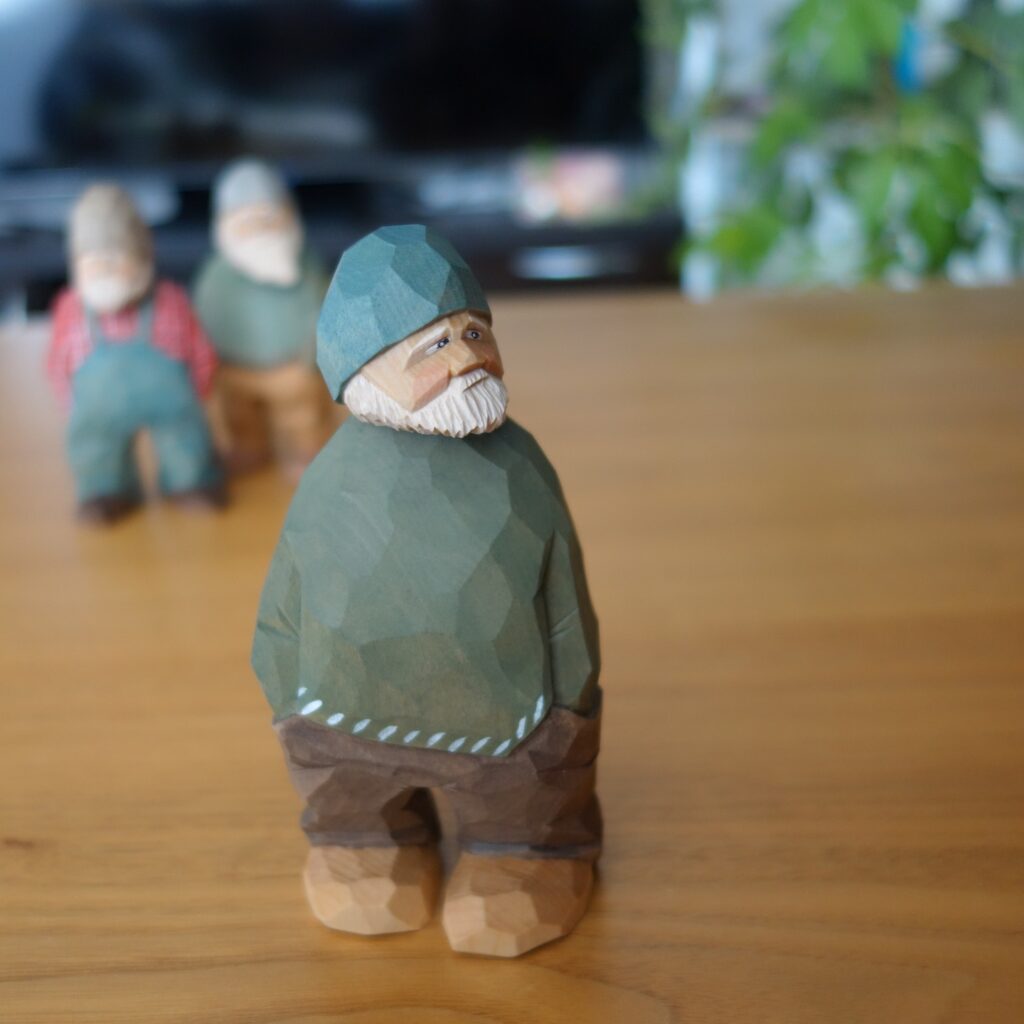
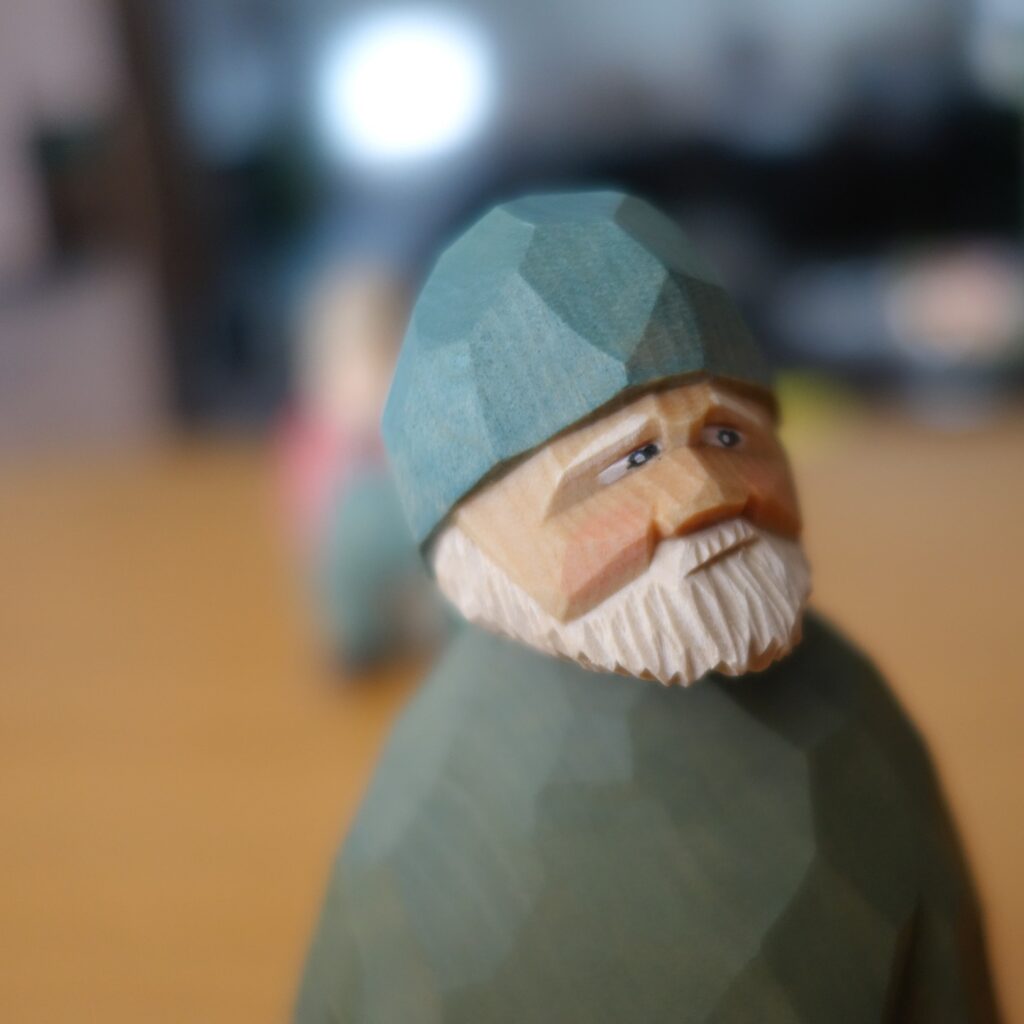
The Thoughtful Whittled Fisherman
This hand-carved wooden figure portrays a bearded man in a green sweater, brown pants, and a teal beanie, gazing slightly upward with a calm, reflective expression. The blocky, faceted carving style highlights the craftsmanship and adds a rustic charm to the piece. The muted earth tones give it a natural, outdoorsy feel—reminiscent of a fisherman or woodsman lost in quiet thought. In the background, two more similar carvings can be seen softly blurred, emphasizing this figure as the focal point of the scene.

The Thoughtful Whittled Fisherman
This hand-carved wooden figure portrays a bearded man in a green sweater, brown pants, and a teal beanie, gazing slightly upward with a calm, reflective expression. The blocky, faceted carving style highlights the craftsmanship and adds a rustic charm to the piece. The muted earth tones give it a natural, outdoorsy feel—reminiscent of a fisherman or woodsman lost in quiet thought. In the background, two more similar carvings can be seen softly blurred, emphasizing this figure as the focal point of the scene.
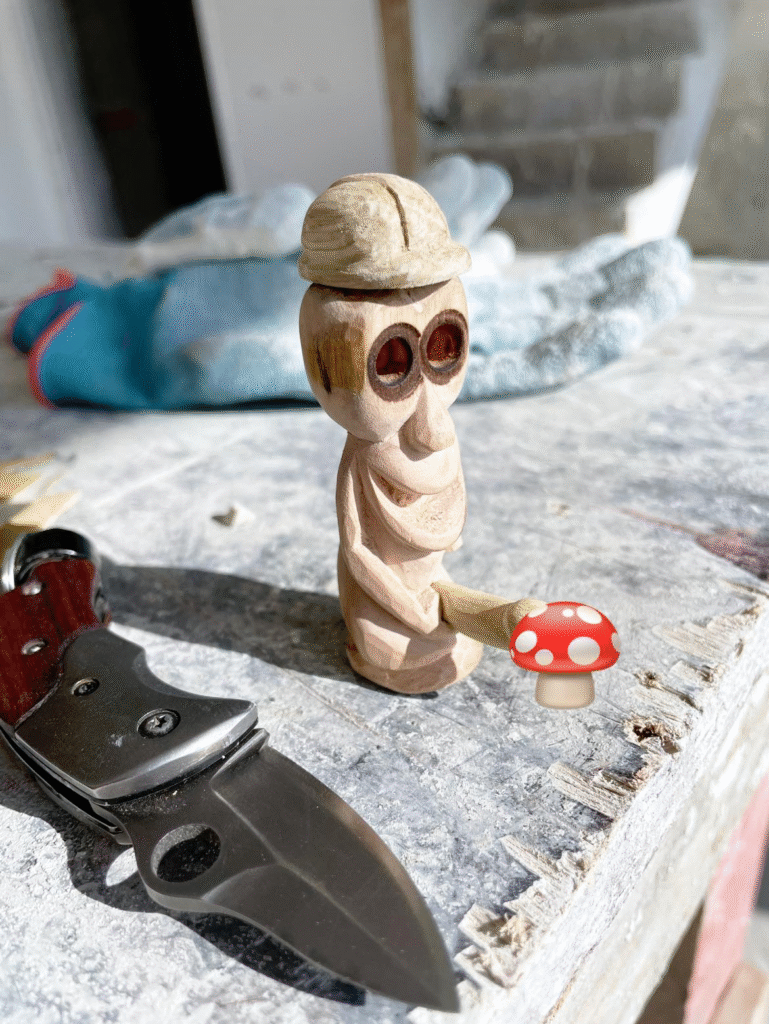
Miniature Scientist Carving: A Tribute in Wood
This charming hand-carved wooden figure depicts a scientist or doctor, dressed in a red dress with a white lab coat and black shoes. The figure’s short black hair and round glasses give it a thoughtful, intelligent expression. Set inside a clear display case on a small wooden base, the piece captures the simplicity and warmth of folk carving while paying homage to professionals in science and medicine. Its clean lines, soft colors, and protective casing make it both a heartfelt gift and a collectible keepsake.
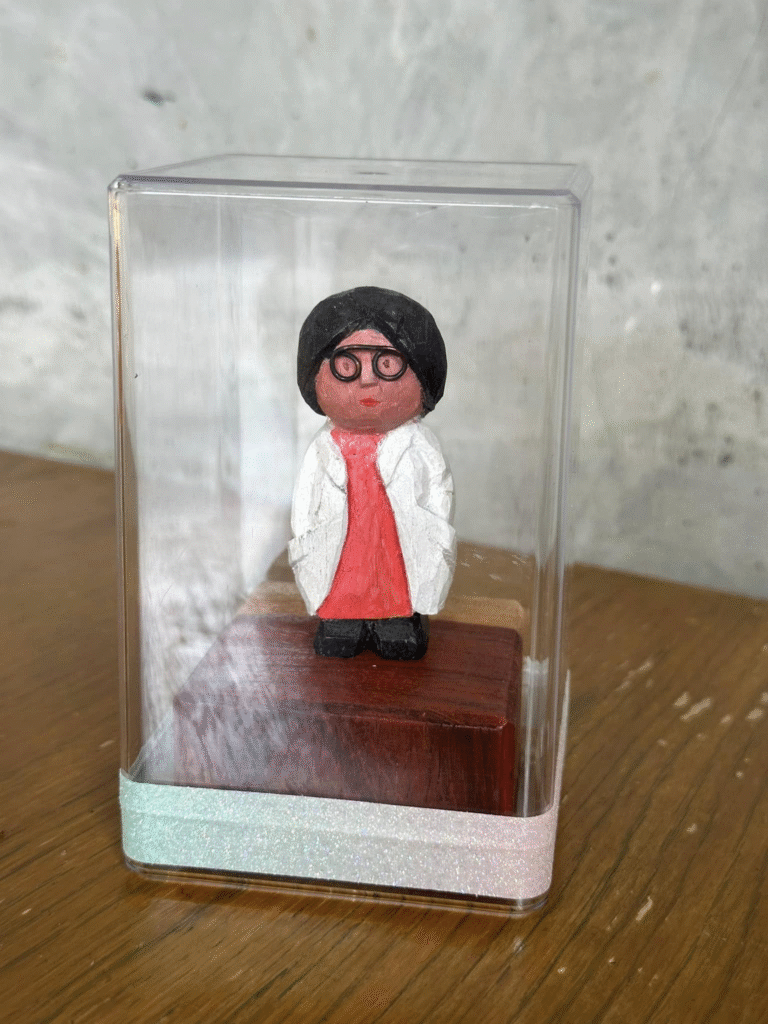
Frida-Inspired Wooden Hair Fork: Art Meets Craftsmanship
This exquisite hand-carved wooden hair fork features the likeness of a woman with a floral headdress, reminiscent of Frida Kahlo’s iconic style. The carving showcases intricate details in the facial features, hair, and blossoms, blending functionality with artistry. Made from smooth, light-colored wood, the piece has a warm, natural finish that highlights its handmade character. Both a practical hair accessory and a collectible art piece, it reflects the beauty of cultural inspiration through fine craftsmanship and design.
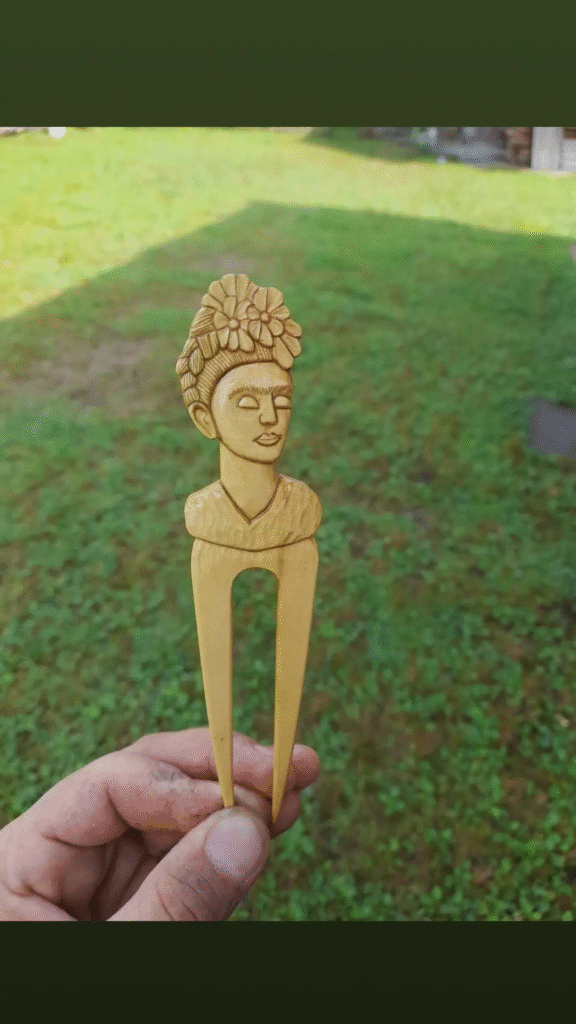
Colorful Whittled Trio: The Fisherfolk and the Leprechaun
This cheerful set of hand-carved wooden figures features three distinct characters, each bursting with color and personality. On the left stands a bright green leprechaun with an orange beard and tall hat, full of playful charm. In the middle, a smiling woman in a yellow raincoat and blue pants adds a friendly, coastal touch. On the right, a bearded man in a red rain jacket completes the trio, giving off the look of a seasoned fisherman. Together, they showcase the lively, whimsical side of wood carving—where folk art meets imagination and storytelling.

Forest Gnome with Axe: Keeper of the Woods
This detailed hand-carved wooden gnome exudes rustic charm, blending storytelling with fine craftsmanship. The figure features a long-bearded gnome in an earthy orange cloak and tall hat, clutching a small axe in one hand while embracing a stylized evergreen tree with the other. The textured cuts on the tree and beard highlight the artist’s attention to detail, while the soft color palette of greens, browns, and grays brings warmth and depth. Set against a backdrop of carving tools, this piece captures the spirit of woodland folklore and the quiet companionship between craftsman and nature.

The Whittled Trio: Minimalist Gnomes in Natural Wood
This image showcases three hand-carved wooden gnomes, each crafted with smooth, clean lines and whimsical curved hats. Their simple, featureless faces—marked only by prominent noses and flowing beards—capture the charm of Scandinavian-style folk carving. The natural variations in wood tone, from pale beige to rich amber, emphasize the organic beauty of the material. Set on a rustic wooden surface, these minimalist figures reflect the elegance of simplicity in whittling—where character is revealed through form, texture, and grain rather than fine detail.
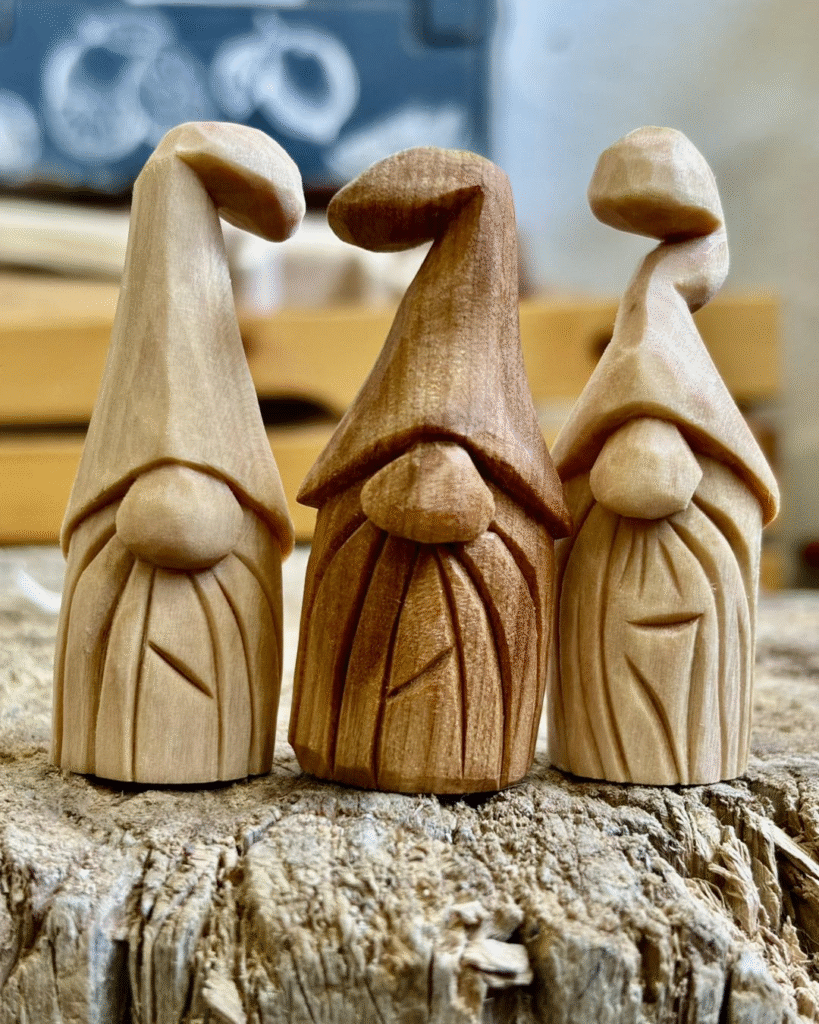
The Whittled Trio: Minimalist Gnomes in Natural Wood
This image showcases three hand-carved wooden gnomes, each crafted with smooth, clean lines and whimsical curved hats. Their simple, featureless faces—marked only by prominent noses and flowing beards—capture the charm of Scandinavian-style folk carving. The natural variations in wood tone, from pale beige to rich amber, emphasize the organic beauty of the material. Set on a rustic wooden surface, these minimalist figures reflect the elegance of simplicity in whittling—where character is revealed through form, texture, and grain rather than fine detail.
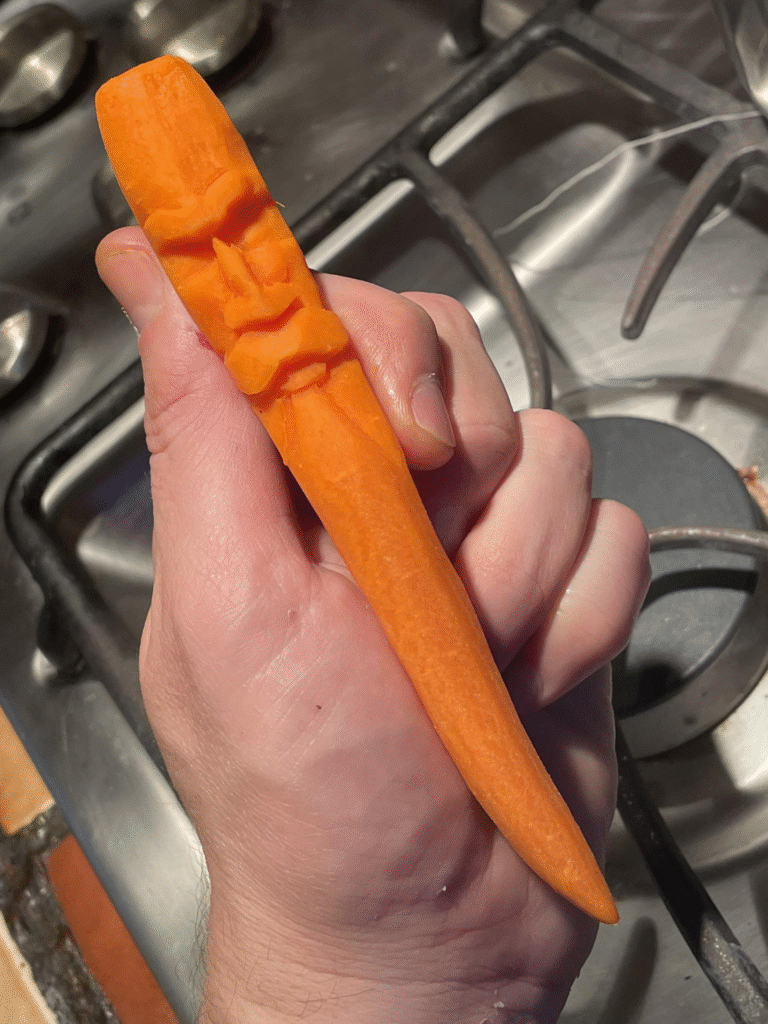
Helpful tips for the beginner
One helpful tip is to begin by identifying the major masses of the figure: the head, chest, and hips. Lightly sketch these areas on your wood block so you know where to remove material and where to leave thickness for strength. When you carve between the torso and the limbs, make shallow angled cuts that suggest the shoulder and hip joints rather than carving away material completely. This approach teaches you how to give the figure a sense of balance and posture before attending to smaller features. If the reference image shows bent arms or a seated pose, use your knife to carve along the edges of the limbs while keeping each limb connected to the main body block until you have the overall silhouette.
Another tip is to leave finer details such as facial features and fingers for last and work on them only after the basic shape looks correct. When you reach the head area, use gentle knife strokes to form a rounded shape, then carve small indentations for eyes and a simple wedge for the nose. Avoid making thin protrusions for fingers; instead, carve hands as mitt-like shapes or simple blocks to preserve wood strength. Finally, use sandpaper to smooth the surface and refine curves. Sanding helps to unify the planes of the figure and gives a more lifelike appearance without requiring intricate knife work. By following these steps, you can bring each of your eight images to life as three-dimensional carvings while building confidence in your whittling skills.
